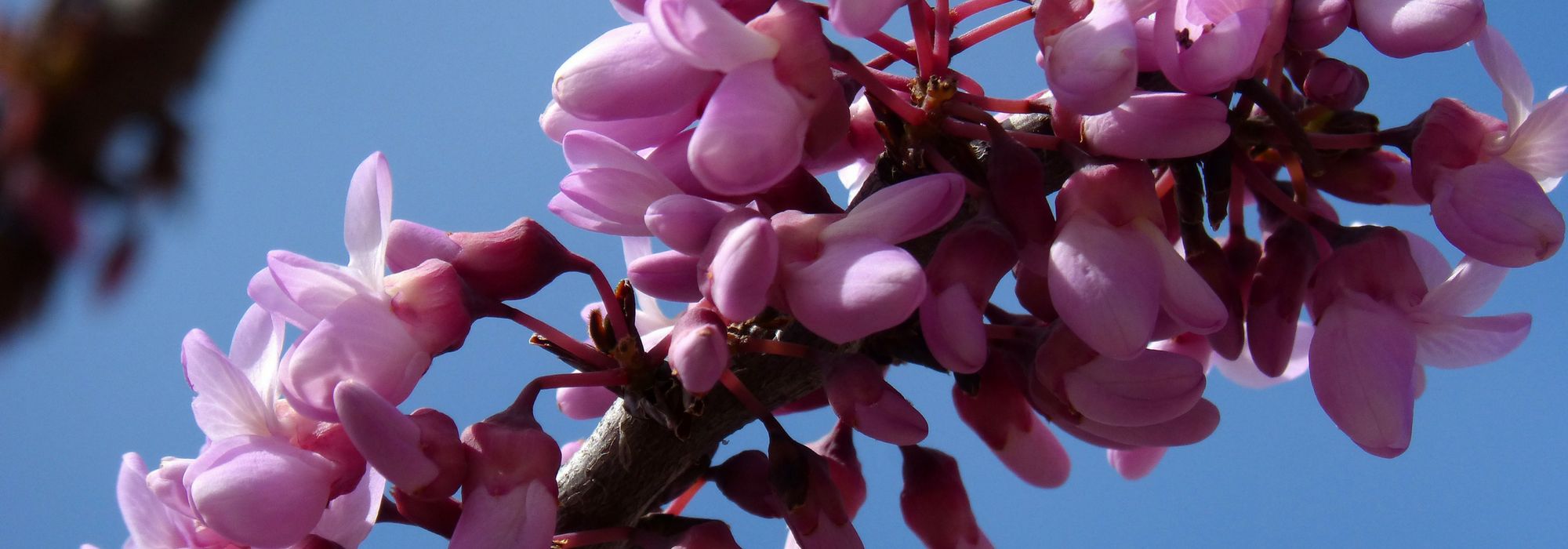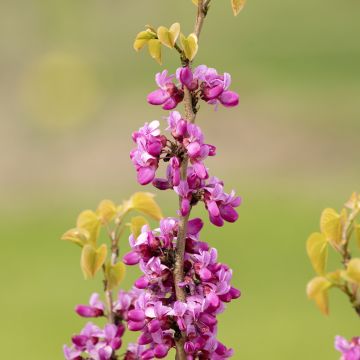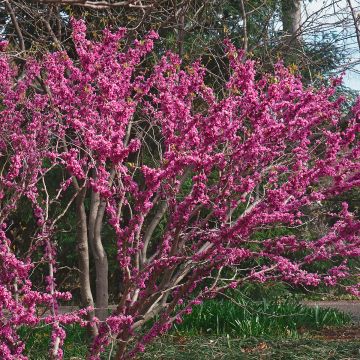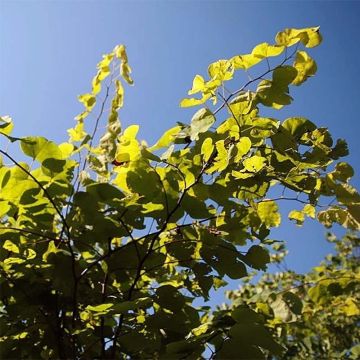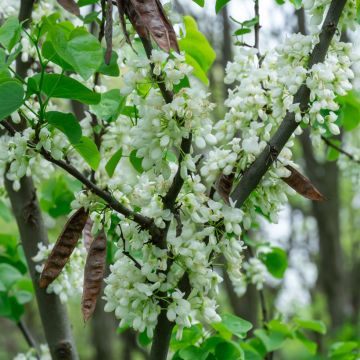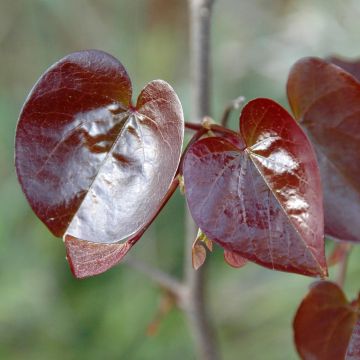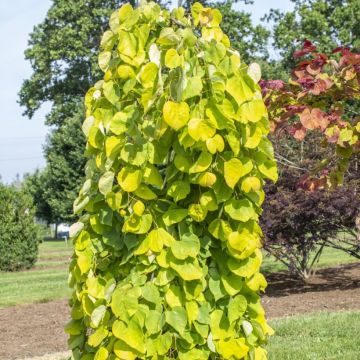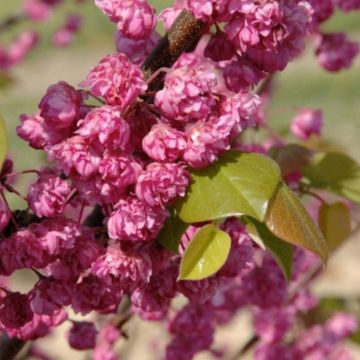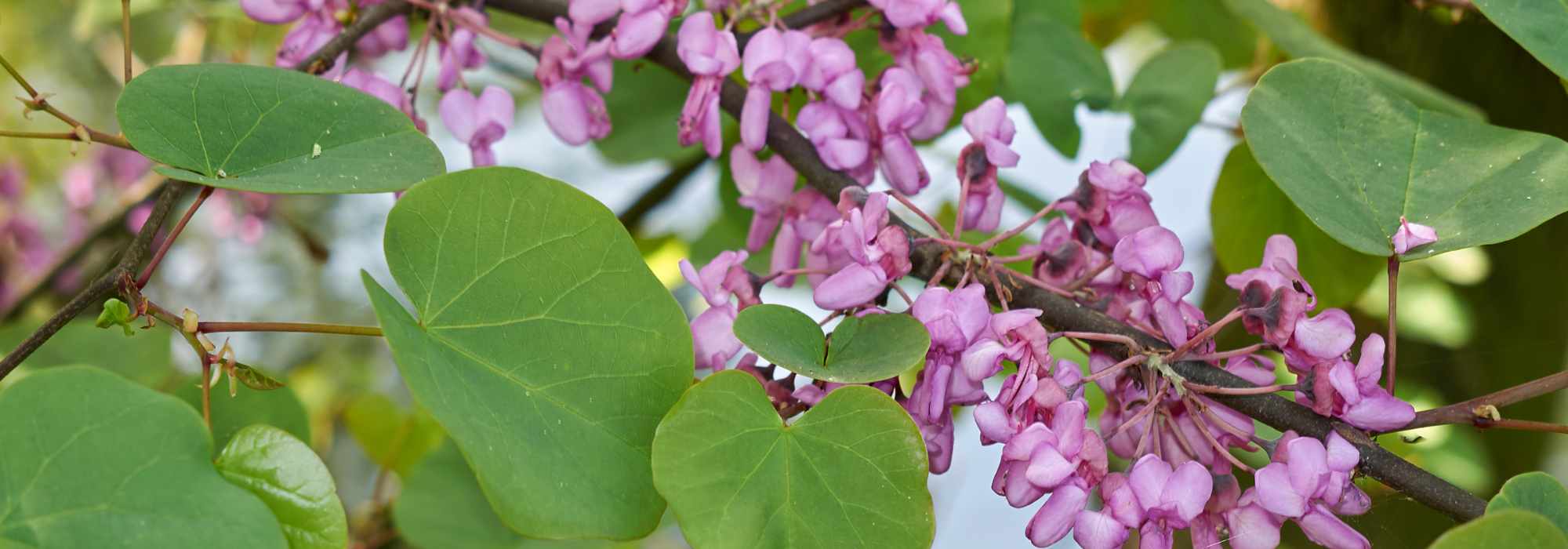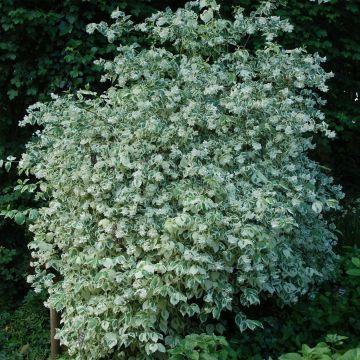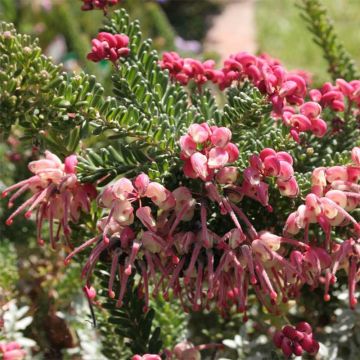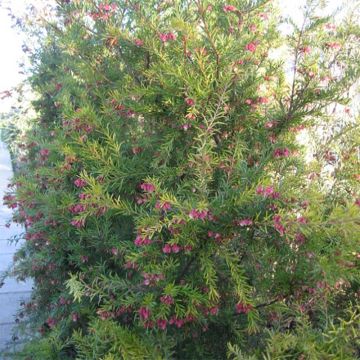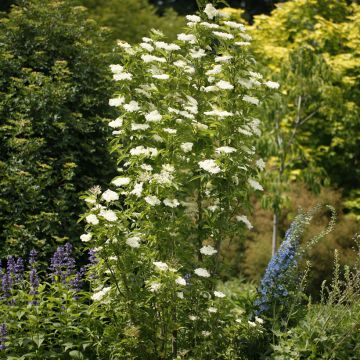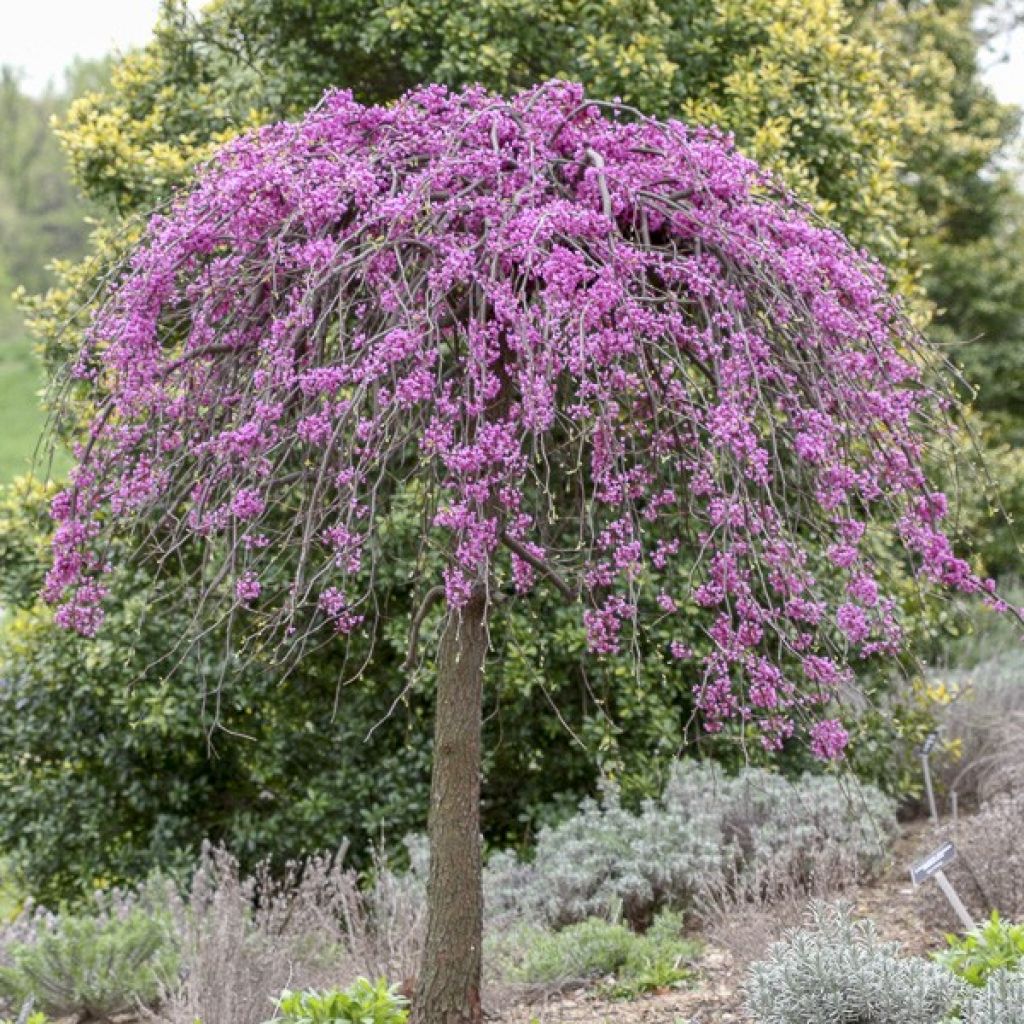

Cercis canadensis Cascading Hearts - Eastern Redbud
Cercis canadensis Cascading Hearts - Eastern Redbud
Cercis canadensis Cascading Hearts
Eastern Redbud, Canadian Redbud, American Redbud, Judas Tree
The carrier handled well in his truck the fact that it is a plant with adequate protection. A little note from Promesse de Fleurs to indicate that pruning should not be done after planting. It's good to have the information. Tree matches the description. Satisfied.
Pierre , 13/12/2024
Special offer!
Receive a €20 voucher for any order over €90 (excluding delivery costs, credit notes, and plastic-free options)!
1- Add your favorite plants to your cart.
2- Once you have reached €90, confirm your order (you can even choose the delivery date!).
3- As soon as your order is shipped, you will receive an email containing your voucher code, valid for 3 months (90 days).
Your voucher is unique and can only be used once, for any order with a minimum value of €20, excluding delivery costs.
Can be combined with other current offers, non-divisible and non-refundable.
Home or relay delivery (depending on size and destination)
Schedule delivery date,
and select date in basket
This plant carries a 24 months recovery warranty
More information
We guarantee the quality of our plants for a full growing cycle, and will replace at our expense any plant that fails to recover under normal climatic and planting conditions.

Would this plant suit my garden?
Set up your Plantfit profile →
Description
Cercis Canadensis 'Cascading Hearts' is a variety of Canadian Redbud with a particularly graceful weeping habit. Like its more common cousin, the Judas tree, this small tree produces numerous clusters of pink flowers before the leaves, in April or even May in harsh climates. At the end of the flowering period, delicately heart-shaped leaves emerge in a coppery hue. They remain dark green throughout the growing season and turn yellow in autumn. Easy to grow, this Redbud thrives in various soils, even slightly chalky ones. It is pollution-tolerant and does not exceed 3 m (9.8 ft) in height, making it an ideal choice for small urban gardens. It is also hardy.
Cercis canadensis is native to eastern and central United States, and belongs to the Fabaceae family. It can reach a height of 12 m (39.4 ft) in its natural habitat but rarely exceeds 4 m to 7 m (13.1 ft to 23 ft) in cultivation. It forms a more or less twisted tree, with branches close to the ground, often wider than tall. The Canadian Redbud has given rise to numerous varieties with different habits, flower colours, and foliage.
Cercis canadensis 'Cascading Hearts' is remarkable in more than one way. It forms a cascading branching structure that almost reaches the ground, with small branches seemingly escaping from the main branches, mimicking the movement of water among rocks. This remarkable pattern during winter serves as the backdrop for a bountiful display of bright pink to purple flowers in spring, consisting of numerous clusters blooming directly on the bare wood. This floral spectacle gradually fades to make way for heart-shaped leaves with a coppery hue, which eventually turn dark green. In autumn, they turn yellow, creating another scene of interest. Its compact size is particularly appealing in small gardens, where it can be used as a focal point or in mass plantings. With a relatively slow growth rate (about 20 cm (7.9 in) per year), it reaches a height and width of approximately 3 m (9.8 ft) in about ten years.
This beautiful small tree is particularly decorative in spring and autumn. It is hardy, undemanding, and adapts to different types of well-draining soils, even tolerating some limestone. It prefers full sun but can also tolerate partial shade, and does not require specific pruning. Its form can be shaped to achieve a perfect dome in a highly structured garden, or left to grow naturally with a more irregular appearance. It is a very adaptable and valuable plant for small gardens, especially in urban areas, as it tolerates atmospheric pollution well.
Its distinctive appearance makes it suitable as a standalone specimen on a lawn in a small garden, but it can also be integrated into a mixed planting bed. In this case, it can be paired with low-growing plants to complement its aesthetic and avoid overpowering it visually.
Its abundant pink flowering will perfectly complement white-flowering shrubs, such as the small Spirea cinerea 'Grefsheim' with delicate branches covered in flowers along their entire length, or the dwarf Mexican orange 'White Dazzler' with its finely divided foliage and contrasting flower shapes compared to those of the Cercis.
Plant habit
Flowering
Foliage
Botanical data
Cercis
canadensis
Cascading Hearts
Fabaceae
Eastern Redbud, Canadian Redbud, American Redbud, Judas Tree
Cultivar or hybrid
Other Cercis
View all →Planting and care
Cercis canadensis 'Cascading Hearts' loves warm and sunny situations, but also adapts to partial shade. It is not picky about the nature of the soil, as long as it is deep and retains some moisture, while also being well-draining. In poor soil, enrich the planting area with good compost or potting soil. Water it regularly during the first seasons in case of drought, as the Canadian Redbud fears long periods of summer drought, unlike its Mediterranean cousin, Cercis siliquastrum, which is perfectly adapted to dry and rocky, even arid, soils. It can tolerate all types of soil but prefers neutral or acidic soils. It is perfectly hardy (-20° C (-4° F)), but flowering may suffer in case of severe frost in early spring. Protection with winter fleece may be useful during the first years in case of a severe cold snap in March.
Planting period
Intended location
Care
Planting & care advice
-
, onOrder confirmed
Reply from on Promesse de fleurs
Similar products
Haven't found what you were looking for?
Hardiness is the lowest winter temperature a plant can endure without suffering serious damage or even dying. However, hardiness is affected by location (a sheltered area, such as a patio), protection (winter cover) and soil type (hardiness is improved by well-drained soil).

Photo Sharing Terms & Conditions
In order to encourage gardeners to interact and share their experiences, Promesse de fleurs offers various media enabling content to be uploaded onto its Site - in particular via the ‘Photo sharing’ module.
The User agrees to refrain from:
- Posting any content that is illegal, prejudicial, insulting, racist, inciteful to hatred, revisionist, contrary to public decency, that infringes on privacy or on the privacy rights of third parties, in particular the publicity rights of persons and goods, intellectual property rights, or the right to privacy.
- Submitting content on behalf of a third party;
- Impersonate the identity of a third party and/or publish any personal information about a third party;
In general, the User undertakes to refrain from any unethical behaviour.
All Content (in particular text, comments, files, images, photos, videos, creative works, etc.), which may be subject to property or intellectual property rights, image or other private rights, shall remain the property of the User, subject to the limited rights granted by the terms of the licence granted by Promesse de fleurs as stated below. Users are at liberty to publish or not to publish such Content on the Site, notably via the ‘Photo Sharing’ facility, and accept that this Content shall be made public and freely accessible, notably on the Internet.
Users further acknowledge, undertake to have ,and guarantee that they hold all necessary rights and permissions to publish such material on the Site, in particular with regard to the legislation in force pertaining to any privacy, property, intellectual property, image, or contractual rights, or rights of any other nature. By publishing such Content on the Site, Users acknowledge accepting full liability as publishers of the Content within the meaning of the law, and grant Promesse de fleurs, free of charge, an inclusive, worldwide licence for the said Content for the entire duration of its publication, including all reproduction, representation, up/downloading, displaying, performing, transmission, and storage rights.
Users also grant permission for their name to be linked to the Content and accept that this link may not always be made available.
By engaging in posting material, Users consent to their Content becoming automatically accessible on the Internet, in particular on other sites and/or blogs and/or web pages of the Promesse de fleurs site, including in particular social pages and the Promesse de fleurs catalogue.
Users may secure the removal of entrusted content free of charge by issuing a simple request via our contact form.
The flowering period indicated on our website applies to countries and regions located in USDA zone 8 (France, the United Kingdom, Ireland, the Netherlands, etc.)
It will vary according to where you live:
- In zones 9 to 10 (Italy, Spain, Greece, etc.), flowering will occur about 2 to 4 weeks earlier.
- In zones 6 to 7 (Germany, Poland, Slovenia, and lower mountainous regions), flowering will be delayed by 2 to 3 weeks.
- In zone 5 (Central Europe, Scandinavia), blooming will be delayed by 3 to 5 weeks.
In temperate climates, pruning of spring-flowering shrubs (forsythia, spireas, etc.) should be done just after flowering.
Pruning of summer-flowering shrubs (Indian Lilac, Perovskia, etc.) can be done in winter or spring.
In cold regions as well as with frost-sensitive plants, avoid pruning too early when severe frosts may still occur.
The planting period indicated on our website applies to countries and regions located in USDA zone 8 (France, United Kingdom, Ireland, Netherlands).
It will vary according to where you live:
- In Mediterranean zones (Marseille, Madrid, Milan, etc.), autumn and winter are the best planting periods.
- In continental zones (Strasbourg, Munich, Vienna, etc.), delay planting by 2 to 3 weeks in spring and bring it forward by 2 to 4 weeks in autumn.
- In mountainous regions (the Alps, Pyrenees, Carpathians, etc.), it is best to plant in late spring (May-June) or late summer (August-September).
The harvesting period indicated on our website applies to countries and regions in USDA zone 8 (France, England, Ireland, the Netherlands).
In colder areas (Scandinavia, Poland, Austria...) fruit and vegetable harvests are likely to be delayed by 3-4 weeks.
In warmer areas (Italy, Spain, Greece, etc.), harvesting will probably take place earlier, depending on weather conditions.
The sowing periods indicated on our website apply to countries and regions within USDA Zone 8 (France, UK, Ireland, Netherlands).
In colder areas (Scandinavia, Poland, Austria...), delay any outdoor sowing by 3-4 weeks, or sow under glass.
In warmer climes (Italy, Spain, Greece, etc.), bring outdoor sowing forward by a few weeks.






























